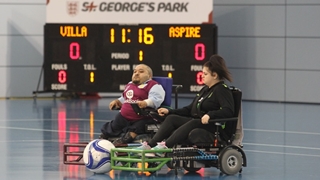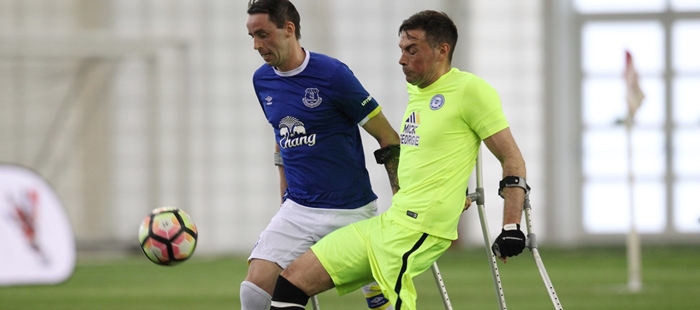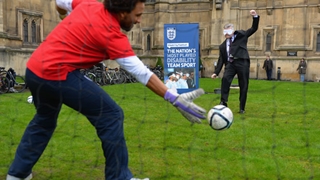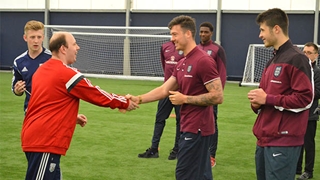
Introduction
There are 9.4m people in England with a long-standing limiting disability, illness or condition which equates to 18 per cent of the population – almost one in five.
The good news is that there has never been a better time to get involved and play football, whatever your ability level.
The FA believes there should be flexible, inclusive and accessible playing opportunities for everyone, whatever their level of ability.
We want to deliver a range of opportunities that sustain and grow opportunities for disabled people to participate and excel through football. We are committed to creating positive environments in which football happens For All.
Disability football – a potted history
Prior to 1999 the development of disability football was limited and had no coherent national strategy.
The creation in 1998 of the Activity Alliance, the umbrella organisation for the eight national disability sports organisations, and the establishment by The FA of the football development department a year later, led to the development of the first disability football initiative: ‘Ability Counts’.
After a period of extensive consultation with its stakeholders and in response to the various government policy documents, The FA produced its football development strategy in 2001, providing a strategic framework for football development in England from 2001 to 2006.
The football development strategy’s key objective was to increase participation, quality and enjoyment of football using four key strands.
One of these, ‘opportunities for all’, committed The FA to ensure that everybody had the opportunity to play, coach, manage, referee and spectate regardless of their race, culture, religion, gender, ability, sexual orientation, ethnicity or social status.
Complementing this, the maiden FA disability football strategy (2004–2006) was the first step in integrating disability football into the mainstream.











